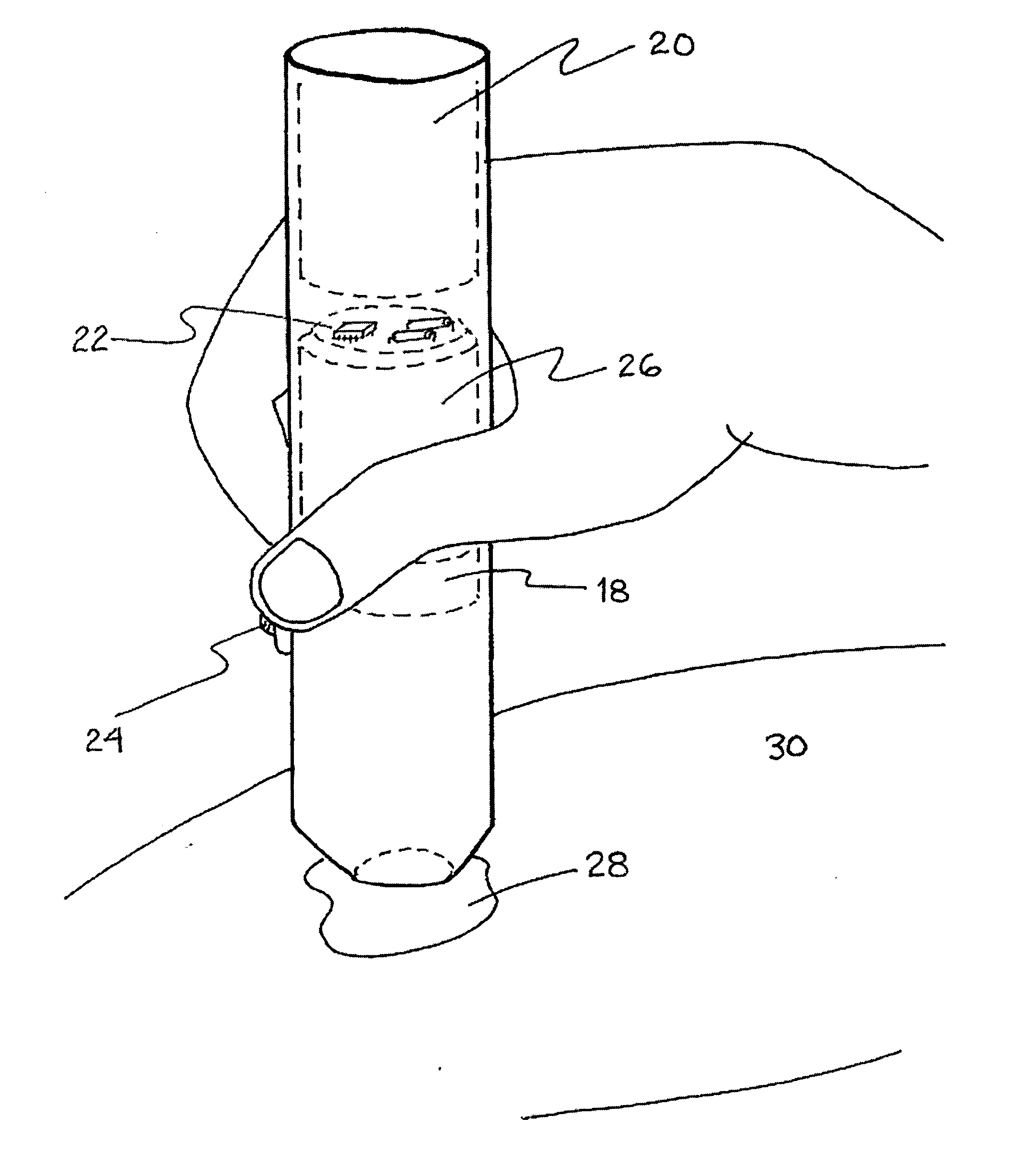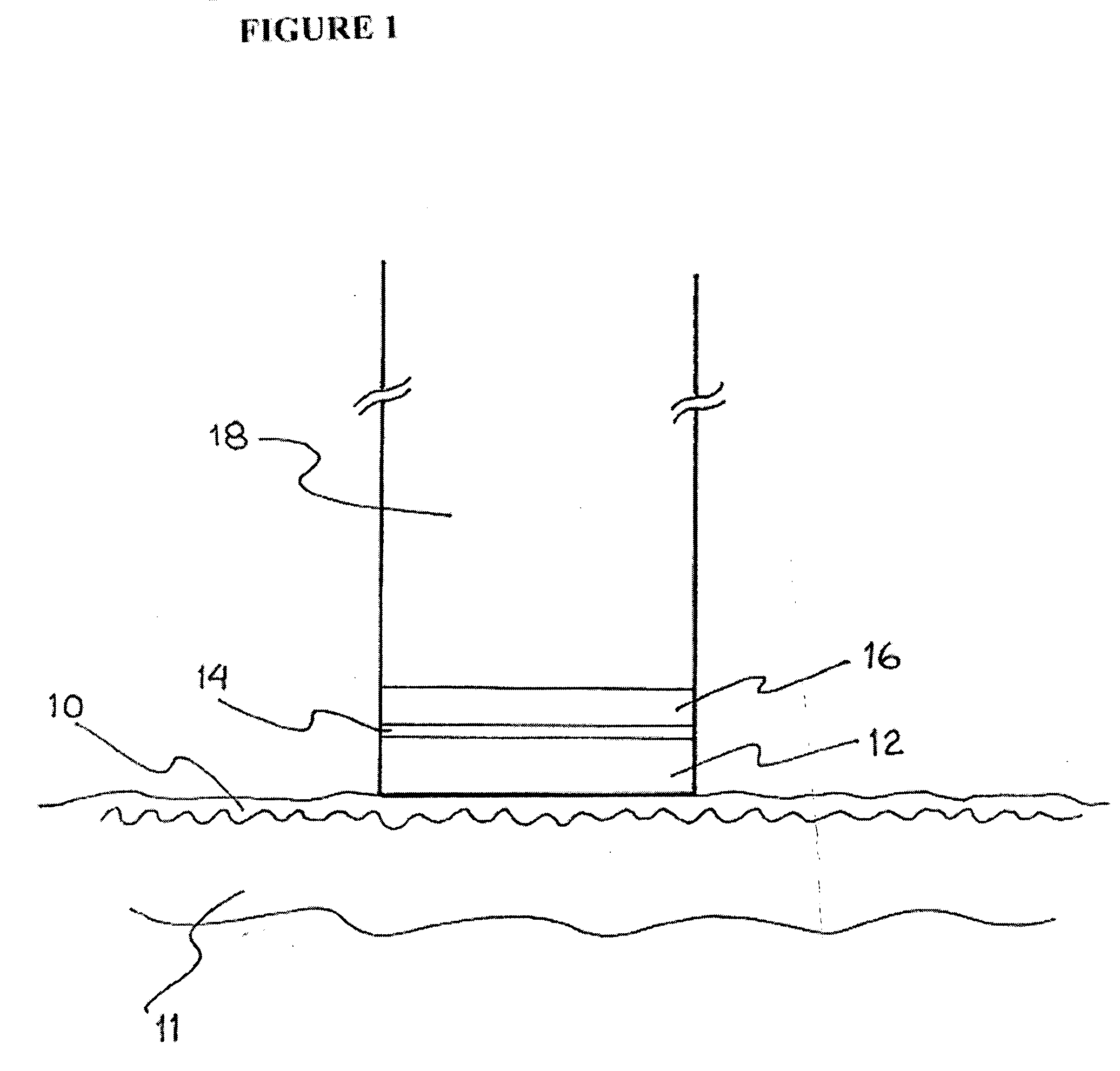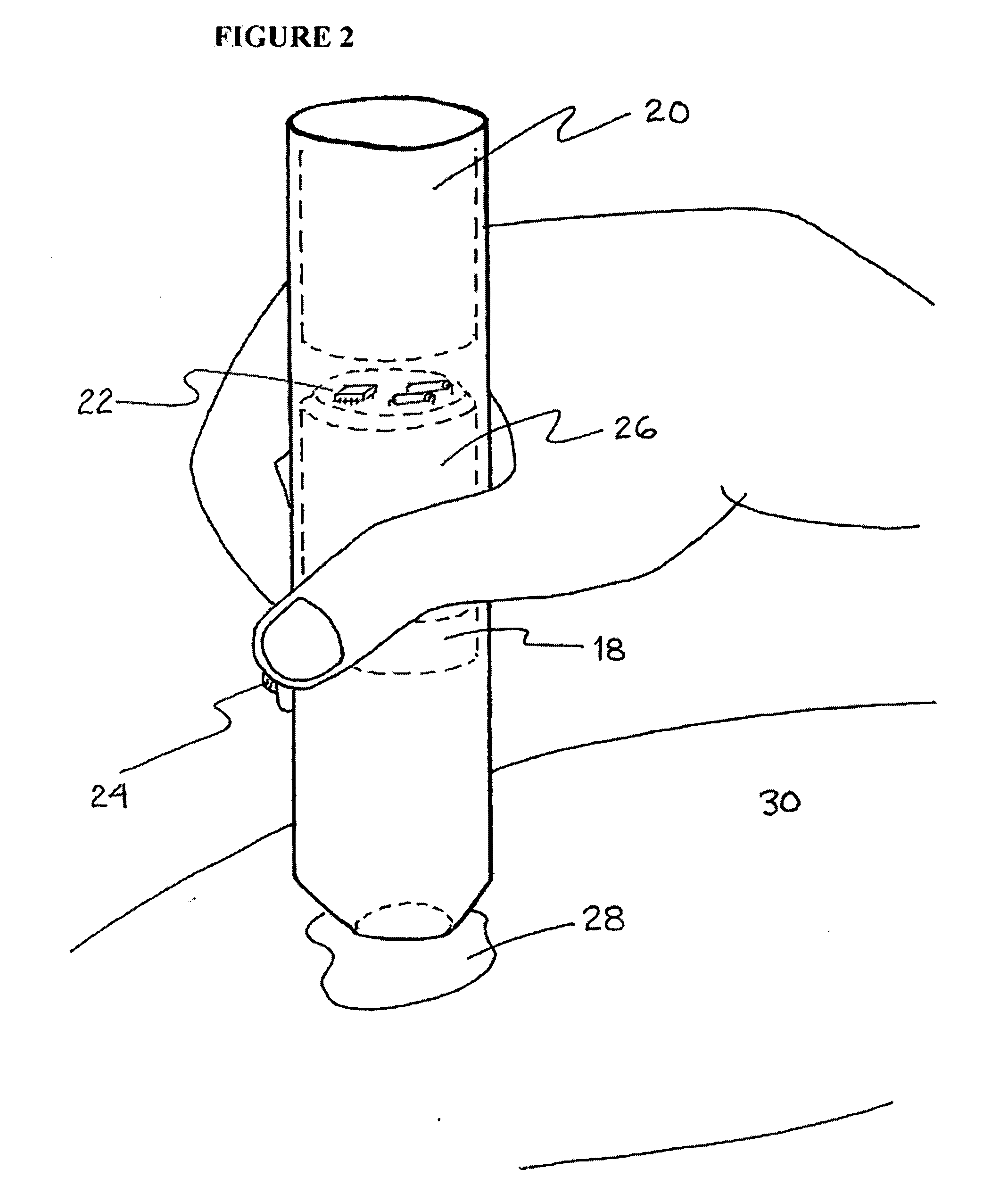Method and apparatus for the treatment of benign pigmented lesions
- Summary
- Abstract
- Description
- Claims
- Application Information
AI Technical Summary
Problems solved by technology
Method used
Image
Examples
Embodiment Construction
[0049] The utility of the apparatus and method disclosed above is not limited to the treatment of benign pigmented lesions. For example, it is known that new collagen can be generated by thermal stimulation of the skin, reducing the appearance of facial wrinkles. Similarly, the appearance of a person suffering from acne may be improved by the application of the thermal pulse produced by the subject invention, through destruction of bacteria or unclogging of facial pores. Thus the present invention may be well suited for these dermatologic conditions as well, particularly for home treatment.
[0050] While exemplary drawings and specific embodiments of the present invention have been described and illustrated, it is to be understood that that the scope of the present invention is not to be limited to the particular embodiments discussed. Thus, the embodiments shall be regarded as illustrative rather than restrictive, and it should be understood that variations may be made in those embod...
PUM
 Login to View More
Login to View More Abstract
Description
Claims
Application Information
 Login to View More
Login to View More - R&D
- Intellectual Property
- Life Sciences
- Materials
- Tech Scout
- Unparalleled Data Quality
- Higher Quality Content
- 60% Fewer Hallucinations
Browse by: Latest US Patents, China's latest patents, Technical Efficacy Thesaurus, Application Domain, Technology Topic, Popular Technical Reports.
© 2025 PatSnap. All rights reserved.Legal|Privacy policy|Modern Slavery Act Transparency Statement|Sitemap|About US| Contact US: help@patsnap.com



